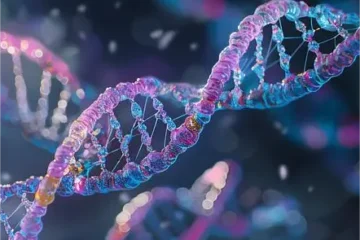Einführung: Spinal Disc Degeneration and Stem Cell-Based Therapies
Spinal disc degeneration (SDD) is a prevalent condition characterized by the deterioration of intervertebral discs (IVDs), leading to severe pain and disability. Traditional treatment options often fail to provide lasting relief, prompting the exploration of novel therapeutic approaches. Stem cell-based therapies have emerged as promising candidates for SDD treatment due to their potential to regenerate damaged cartilage tissue and restore disc function.
Cartilage Matrix and Its Role in Spinal Disc Health
The IVD comprises a central nucleus pulposus (NP) surrounded by a cartilaginous annulus fibrosus (AF). The NP is composed primarily of proteoglycans and water, providing hydration and resilience. The AF consists of collagen fibers arranged in concentric layers, conferring structural support and flexibility. The integrity of the cartilage matrix is crucial for maintaining disc biomechanics and absorbing spinal loads.
Stem Cell Sources for Cartilage Repair in Spinal Discs
Various stem cell sources have been investigated for cartilage repair in spinal discs. These include mesenchymal stem cells (MSCs), adipose-derived stem cells (ADSCs), bone marrow-derived stem cells (BMSCs), und induzierte pluripotente Stammzellen (iPSCs). Each source offers unique advantages and challenges, influencing their suitability for SDD treatment.
Mesenchymale Stammzellen: Potential and Limitations
MSCs are multipotent stromal cells with the capacity to differentiate into various cell types, including chondrocytes. They are readily accessible from bone marrow, Fettgewebe, and other sources. Jedoch, their differentiation potential may be limited, and they can exhibit senescence during expansion.
Aus Fettgewebe gewonnene Stammzellen: Advantages and Challenges
ADSCs are abundant and easily harvested from adipose tissue. They possess chondrogenic potential and exhibit anti-inflammatory properties. Jedoch, their differentiation efficiency and long-term stability require further optimization.
Bone Marrow-Derived Stem Cells: Applications and Considerations
BMSCs are a well-established stem cell source with proven efficacy in cartilage repair. They have been used in clinical trials for SDD treatment, showing promising results. Jedoch, their limited availability and potential for donor-site morbidity warrant further investigation.
Induzierte pluripotente Stammzellen: Promise and Ethical Implications
iPSCs are generated by reprogramming somatic cells into a pluripotent state. They offer the potential for autologous cell therapy and unlimited expansion. Jedoch, ethical concerns and the risk of teratoma formation require careful consideration.
Cell Delivery Methods for Cartilage Regeneration
Effective cell delivery is critical for successful cartilage repair. Various methods have been explored, including direct injection, hydrogel scaffolds, and tissue engineering constructs. Each approach aims to provide a supportive environment for cell survival, Differenzierung, and integration with the host tissue.
Tissue Engineering Approaches for Spinal Disc Repair
Tissue engineering involves combining stem cells with biomaterials to create functional constructs that mimic the native IVD. These constructs aim to restore the structural and biomechanical properties of the disc, providing a more comprehensive approach to SDD treatment.
Clinical Trials and Future Directions in Stem Cell Therapy
Several clinical trials are underway to evaluate the safety and efficacy of Stammzelltherapie for SDD. While early results are encouraging, long-term follow-up studies are necessary to assess the durability of treatment outcomes. Future research will focus on optimizing cell sources, Versandarten, and tissue engineering strategies to further improve therapeutic efficacy.
Regulatory Considerations and Safety Concerns
Stammzelltherapie for SDD raises regulatory and safety concerns. Regulatory bodies must establish guidelines for cell manufacturing, preclinical testing, and clinical trials. Safety concerns include potential tumorigenicity, Immunabstoßung, und ethische Überlegungen.
Abschluss: Advancements and Future Prospects
Stem cell-based therapies hold immense promise for the treatment of SDD. The identification of suitable stem cell sources, development of effective delivery methods, and advancements in tissue engineering approaches are paving the way for novel therapeutic strategies. Continued research and clinical trials will refine these techniques, ultimately leading to improved patient outcomes and a reduction in the burden of SDD.


